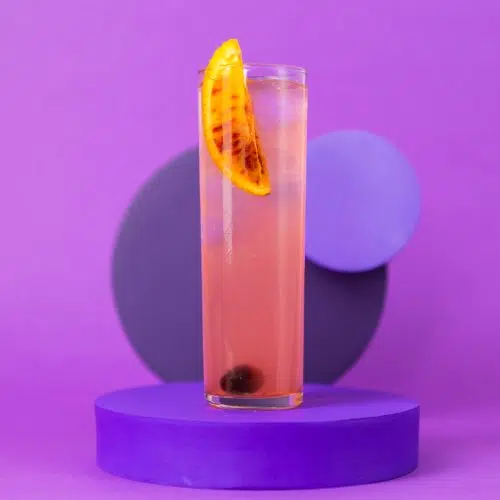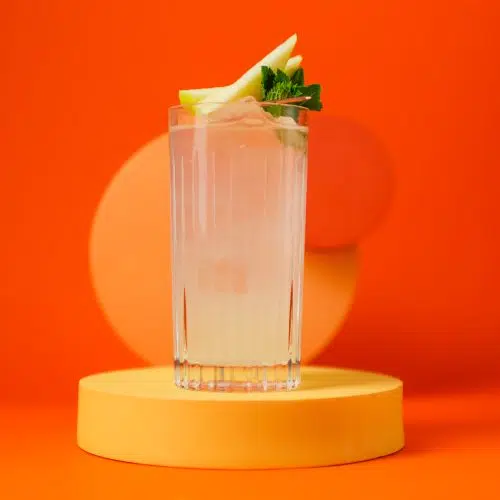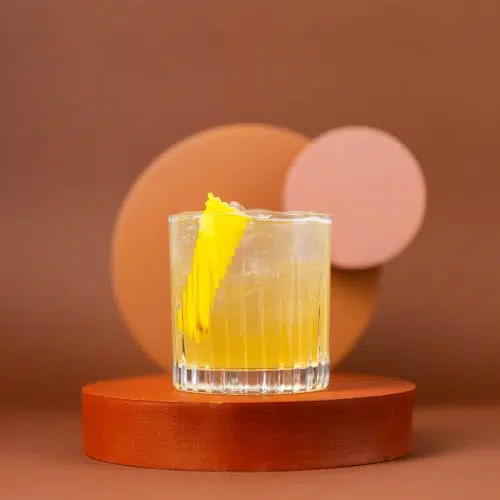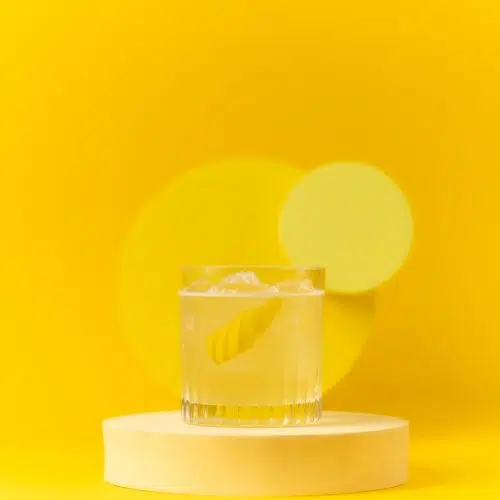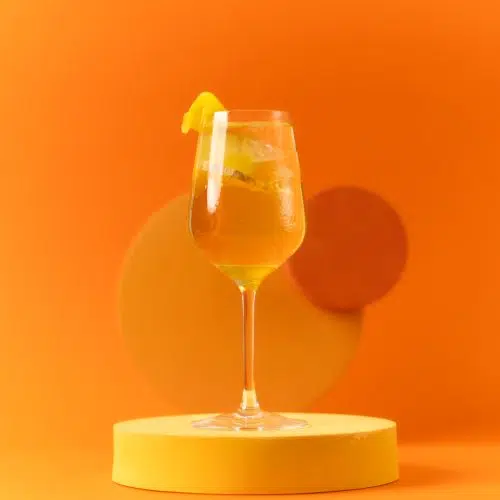Home / Absinthe
Absinthe
- Updated February 1, 2024

Absinthe Guide – What to Know Before You Shop Absinthe Online
Absinthe: a green drink with a wild history! Famous for its powerful punch, it became the favorite of many artists and rebels back in the day. Known as the ‘green fairy,’ it’s not just known for its cool color and strong flavor but also for the myths and stories that followed it through time. Unlike strong drinks like rum or Everclear, Absinthe has charm and playful rituals, like dripping water over a sugar cube.
What is Absinthe?
Absinthe is a distilled, highly alcoholic beverage originating from Switzerland. It is green and is flavored with botanicals like wormwood, anise, and fennel. It’s known for its strong licorice flavor and is historically associated with bohemian culture and the myth of hallucinogenic properties.
Is it legal in the U.S.?
Absinthe is legal in the United States. It regained its legal status in 2007 after a ban that lasted for nearly a century. The United States regulates the production and sale. The liquor must have less than 10 parts per million of thujone, which was historically believed to have psychoactive properties. Furthermore, labels and marketing materials cannot glamorize or reference the historical lore of hallucinogenic effects or mind-altering properties.
Effects
Myths of unique psychoactive properties surround Absinthe but have no scientific backing for inducing hallucinations or a different form of intoxication known as the “absinthe effect.” Historical narratives tell tales of artists and writers experiencing unusual clarity or vivid experiences while consuming the spirit. But modern research debunks these accounts, attributing them possibly to the high alcohol content and the ritualistic preparation method.
Different types
Two main styles are green and clear (Blanche and Verte). But since there are no strict rules for how to make the spirit, other types emerged. Here is an overview of the most comon types:
Traditional Green Absinthe (Verte)
This type offers a green hue derived naturally from the herbs used in its production. This type goes through a second steeping stage with additional herbs after distillation.
White Absinthe (Blanche)
This type does not undergo the final herb steeping process, resulting in a clear spirit. While it maintains a similar herbal flavor due to the use of wormwood, it often has a somewhat lighter and more straightforward taste.
Red Absinthe
Red Absinthe is a unique variation that obtains its vibrant color from hibiscus flowers. It’s not as commonly found as the green and white varieties and can present a somewhat different, often slightly floral, flavor profile due to the inclusion of the hibiscus.
Bohemian or Czech Absinth
This type forgoes the anise commonly found in traditional recipes, providing a different flavor, often perceived as less complex.
What does Absinthe taste like?
Absinthe primarily tastes of anise, which is similar to licorice, and it also has subtle herbal and floral notes due to the various botanicals, like wormwood and fennel, used in its production.
How much alcohol is in Absinthe?
Absinthe typically has an Alcohol by Volume (ABV) ranging from 45% to 74%, translating to 90 to 148 proof.
Several liquors parallel or exceed in alcohol content, with examples including Everclear, offering versions at 151 and 190 proof, and Spirytus vodka, which hits a remarkable 192 proof. The discontinued Bacardi 151 rum was also potent, while Pincer Vodka and Bruichladdich X4 whiskey offer high-proof options at 177.6 and 184 proof, respectively. These high-alcohol spirits are often used in infusions or culinary applications.
Are there any Absinthe substitutes?
Various alternatives can mimic Absinthe’s unique flavor profile if you don’t have it. Pernod and Ricard, known as pastis, offer an anise-forward flavor, making them common substitutes despite being less potent. Another option, Herbsaint, an anise-flavored liqueur from New Orleans, initially created as an alternative, delivers similar flavors but lacks the wormwood. Ouzo and Sambuca, Mediterranean anise-flavored spirits, can also fill in, but they bring a sweeter profile, which might alter the intended taste of a recipe.
10 popular Absinthe brands
Check out our DrinksWorld top picks:
Pernod
Pernod Absinthe is one of the most recognizable and respected brands. The brand maintains traditional crafting methods, using a wine alcohol base and an array of botanicals like anise, fennel, and grande wormwood.
Lucid
Absinthe Lucid plays a role in the resurgence of the spirit. They were the first to gain U.S. approval after the ban was lifted in 2007. Ted Breaux, a respected historian, and distiller, ensures authenticity and quality in every bottle.
La Clandestine
La Clandestine Absinthe from Switzerland is a hand-crafted, award-winning spirit known for its smooth, refined, and slightly sweet profile.
Kübler
Kübler Absinthe, originating in Switzerland, offers a slightly creamy texture and a well-balanced profile. It presents a traditional, richly herbal experience derived from meticulously selected botanicals.
St. George
California-based St. George Absinthe Verte is known for its intricate blend of botanicals, providing a luxurious, layered experience that is both herbaceous and slightly citrusy.
Absinthe Jade 1901
Absinthe Jade 1901, another creation by Ted Breaux, stands out for its meticulous replication.
Vieux Pontarlier
Vieux Pontarlier Absinthe impresses with its classic, well-rounded profile, exhibiting traditional flavors derived from select botanicals and a wine alcohol base.
Duplais
Absinthe Duplais, based on a 19th-century recipe, is the first to be commercially produced in Switzerland after the country lifted its ban in 2005, presenting a robust and authentically herbal profile.
La Fée Parisienne
La Fee Parisienne Absinthe, distilled in Paris, embraces the classic French absinthe tradition with its potent anise and herbal notes, becoming a favorite among those seeking a genuinely Parisian experience.
Mansinthe
Musician Marilyn Manson develops this brand and brings a well-received and award-winning spirit. It has a balanced flavor profile and a surprising yet pleasant wormwood-forward taste.
Where to buy Absinthe online?
We’ve listed our top choices below. Keep in mind, the laws for delivering alcohol vary from state to state.
Drizly
Drizly offers a diverse selection of Absinthe and can bring your choice right to your door in under 60 minutes if you live in one of their delivery areas. Their user-friendly website and app enable you to explore a variety of brands and prices, catering to both absinthe newcomers and seasoned enthusiasts.
Absinthes.com
Absinthes.com specializes in Absinthes, ensuring a wide and varied selection of high-quality spirits. They ship to many countries worldwide and provide extensive information about each bottle, aiding in making informed purchases.
Total Wine & More
Total Wine & More boasts a robust online store with a respectable selection of Absinthe and other spirits. They offer shipping to select U.S. states and allow you to pick up your purchase in-store.
The Whisky Exchange
The Whisky Exchange not only offers an extensive selection of whisky but also hosts a variety brands. They deliver to several countries worldwide and provide detailed descriptions and reviews for each bottle.
Master of Malt
Master of Malt features a myriad of spirits, including a dedicated section, and delivers to many locations across the globe. Their website includes insightful information about each product, helping customers choose a bottle that suits their preferences.
BevMo!
BevMo! Allows you to explore and purchase a variety of Absinthe online. With options for delivery and in-store pickup, it offers convenience to customers in the states where it operates.
How much does Absinthe cost – Price Ranges
- Budget-Friendly
For those keen to explore without a hefty price tag, options are available for under $30. Brands like Pernod and Absinthe provide a cost-effective introduction to the spirit, making them popular choices for cocktails.
- Mid-Range
Navigating through the mid-range of absinthe pricing, which spans from $30 to $80, you’ll encounter a variety of brands that offer a balance of quality and affordability. Labels such as Vieux Carré and St. George Verte are recognized for their distinctive flavors and are commonly enjoyed in traditional preparations.
- Premium
Venturing into the premium absinthe market, where bottles can range from $80 to $200 or more, you’ll discover spirits emphasizing quality, unique flavor profiles, and often, a traditional distillation process. Brands like Jade and Vieux Pontarlier are revered for their meticulous crafting and rich, nuanced flavors.
- Collectibles
For collectors and those seeking rare or specialized bottles, prices can surge well beyond $200. These vintage or limited production run editions are prized for their exclusivity and historical value.
How to drink Absinthe
- Traditional Drip Method
The absinthe drip method involves gently diluting Absinthe with ice-cold water, usually drizzled over a sugar cube. Place a special slotted spoon over a glass, put a sugar cube on it, and slowly drip cold water over the sugar until it dissolves into the spirit below. This slow addition of water allows the Absinthe to “louche” or turn cloudy as the essential oils are released, revealing a spectrum of herbal aromas and flavors.
- Cocktails
Absinthe can boost cocktails with its bold and botanical profile. The Sazerac combines it with rye whiskey, sugar, and a few dashes of Peychaud’s Bitters. Absinthe also plays a key role in the classic cocktail Death in the Afternoon, which mixes it with champagne and is famously enjoyed by Ernest Hemingway.
- Absinthe Frappé
The Absinthe Frappé combines Absinthe with simple syrup and fresh mint, served over crushed ice. To create this, you shake Absinthe with fresh mint leaves and simple syrup, strain into a glass filled with crushed ice, and then garnish with additional mint.
- Neat
Sipping Absinthe neat is reserved for the higher-quality, often pricier bottles that exhibit a balance and smoothness without sugar or dilution. You pour a small amount into a glass and savor it slowly, allowing the intricate flavors and aromas to unfold with each sip.
- With Fire Ritual
Lighting absinthe on fire, often associated with modern culture, deviates from historical traditions. Absinthe is poured over a sugar cube to perform this method, which is then ignited. Once the flame subsides, water is added to dilute the drink. While visually dramatic, purists often eschew this method as it can alter the spirit’s flavor and diminish its aromatic complexity.
8 Popular Absinthe cocktails
When you use it in cocktails, it becomes incredibly adaptable, going great with both sweet and tangy ingredients. Check out Absinthe drinks that DrinksWorld bartenders like to mix up:
Death in the Afternoon
Ernest Hemingway crafted Death in the Afternoon, combining Absinthe and champagne. Pour a jigger into a champagne glass and top it with champagne, creating a sophisticated and effervescent drink with a powerful kick.
Sazerac
The Sazerac, originating in New Orleans, melds the main spirit with whiskey and bitters. Coat the inside of an old-fashioned glass with Absinthe, mix rye whiskey and bitters in another, and then pour the whiskey mix into the Absinthe-washed glass, savoring a robust and aromatic cocktail.
Absinthe Frappé
Shake Absinthe, simple syrup, and fresh mint together, then strain over crushed ice. The cool mint and ice contrast beautifully with the spirit’s solid and herbaceous notes.
Corpse Reviver #2
The Corpse Reviver #2 combines equal parts absinthe, gin, Lillet Blanc, and Cointreau with a dash of lemon juice. Shake ingredients together and strain into a cocktail glass, presenting a balanced, citrusy drink with a potent punch.
Suissesse
This cocktail blends the spirit with orgeat syrup, cream, and egg white. Shake vigorously and strain into a glass, yielding a rich, velvety cocktail that’s both sweet and creamy.
Chrysanthemum
For a Chrysanthemum, stir together dry vermouth and Benedictine with a few dashes of absinthe, then strain into a glass and garnish with an orange twist. The herbal and slightly sweet notes make this a nuanced, elegant cocktail.
Absinthe Drip
The classic Drip involves placing a sugar cube on a slotted spoon over a glass and slowly dripping ice-cold water over it. The gradual dilution releases the spirit’s botanical aromas, creating a mesmerizing, ritualistic drink.
Obituary Cocktail
Mix gin and dry vermouth with a dash of Absinthe to create the Obituary Cocktail, then stir and strain into a chilled glass. The botanicals of the gin and the anise notes intertwine, creating a deeply aromatic, sophisticated cocktail.
What are the ingredients?
An overview of the principal botanicals and herbs:
- Wormwood
Wormwood, specifically Artemisia absinthium, stands out as the key ingredient. Wormwood oil contains thujone, which historically garnered a controversial reputation, although modern Absinthe adheres to strict regulations regarding its content.
- Anise
Anise delivers a prominent licorice-like flavor. It offers a sweet and somewhat spicy aroma and contributes to the louching effect, where Absinthe turns milky or opaque when mixed with water.
- Fennel
Fennel plays a supporting role alongside anise, contributing a slightly sweet and herbal flavor. Fennel with anise and wormwood completes the holy trinity of essential ingredients, deeply entwining its identity with the spirit.
- Green Anise
Green anise amplifies the licorice note, reinforcing the sweet and spicy profile. Green anise originated in the Eastern Mediterranean region and is crucial for forming the classic flavor.
- Additional Botanicals
Various additional botanicals create unique flavor profiles. Ingredients like coriander, angelica root, mint, and veronica often find a place in the recipes, each contributing additional layers of aroma and complexity.
- Sweetening Agents
Some variants, known as absinthe liqueurs, include added sugar. Traditional absinthes do not contain sugar, but these liqueurs offer a slightly sweeter option for those who prefer a less bitter spirit.
- Coloring Herbs
A second maceration with herbs like hyssop, petite wormwood, and melissa provides the iconic green color in green absinthes. This step is not just for appearance; these herbs also introduce flavors and aromas.
How is Absinthe made?
Unlike whisky, brandy, and gin, which have strict global rules for how to make them and what they contain, most countries don’t have legal rules for what makes absinthe. This means producers can call a drink ‘absinthe’ or ‘absinth’ without meeting certain legal standards or quality levels. However, following the process steps often involve making the spirit:
1. Selection botanicals
The creation begins with selecting specific botanicals, with wormwood, anise, and fennel being the foundational trio. Makers often add herbs and spices, like coriander, angelica, and veronica, to craft their unique flavor profiles. These ingredients are meticulously prepared, often through crushing or macerating, to optimize the extraction of flavors during distillation.
2. Maceration Process
The prepared botanicals are submerged in a base spirit, typically a neutral grape or grain alcohol, to initiate the maceration process. They steep in this spirit for a specific time, allowing the alcohol to extract the essential oils and flavors from the botanical blend. This results in a highly aromatic and intensely flavored mixture.
3. Distillation
After maceration, the mixture undergoes distillation, heated until the alcohol evaporates, then cooled to condense it back into a liquid. This process refines the spirit, capturing the concentrated flavors and essences of the botanicals while leaving behind unwanted compounds.
4. Coloring Stage
Absinthe can be either clear or green, with the green hue naturally derived through a secondary maceration with coloring herbs like hyssop, melissa, and petite wormwood. This imparts the signature green color and adds complexity to the spirit’s flavor and aroma. Clear Absinthe, also known as “Blanche” or “la bleue,” skips this step and is bottled directly after distillation.
5. Aging and Bottling
Some, especially premium variants, may be aged in barrels to develop additional depth and complexity. Finally, it’s is filtered, diluted to the desired bottle strength with water, and then bottled for sale. Certain brands may also add sugar, classifying the product as an absinthe liqueur.
History and Origin
The roots trace back to ancient Egypt, where medical practitioners used wormwood extracts for various remedies. Over centuries, similar practices involving wormwood spread throughout Europe, with the plant utilized for its supposed medicinal properties.
Absinthe, as we recognize it today, originated in the late 18th century in the Val-de-Travers region of Switzerland. Dr. Pierre Ordinaire, a French doctor living in Switzerland, developed a distilled elixir using wormwood and dubbed it “absinthe.” Following Dr. Ordinaire’s creation, Henri-Louis Pernod opened the first distillery in Switzerland and later expanded to Pontarlier, France.
In the 19th century, it gained massive popularity in France among artists and writers, who praised it for its supposed mind-liberating effects. Parisian cafes and bars promoted “l’heure verte” (the green hour). It wasn’t merely a drink but a symbol of rebellion, creativity, and transformation.
Rising concerns about its safety and purported hallucinogenic properties led to its ban in many countries, including the United States in 1912 and France in 1915.
The late 20th and early 21st centuries witnessed a revival of the spirit. European nations began lifting bans, with the resurgence gaining momentum in the 1990s thanks to renewed interest and modern science debunking many of the myths surrounding it. In 2007, the United States lifted its nearly century-long ban.
FAQs
- What is the “green fairy”? The “green fairy” is a nickname for Absinthe, linked to its historical association with bohemian culture.
- Is there a proper glassware for Absinthe? Yes, traditional glassware has a reservoir to measure the correct amount of spirit.
- What is thujone? Thujone is a compound found in wormwood, once falsely believed to be hallucinogenic.
- What is an absinthe spoon? A perforated or slotted spoon used to dissolve a sugar cube.
- Who were famous historical absinthe drinkers? Notable individuals include Vincent Van Gogh, Oscar Wilde, and Ernest Hemingway.
- What impact did it have on art and literature? It influenced numerous artists and writers, contributing to the bohemian and absurdist movements of the 19th and early 20th centuries.
- Is absinth legal in Europe? As of 2024, absinthe is legal in all countries of the European Union. In France the ban was lifted in 2011.






